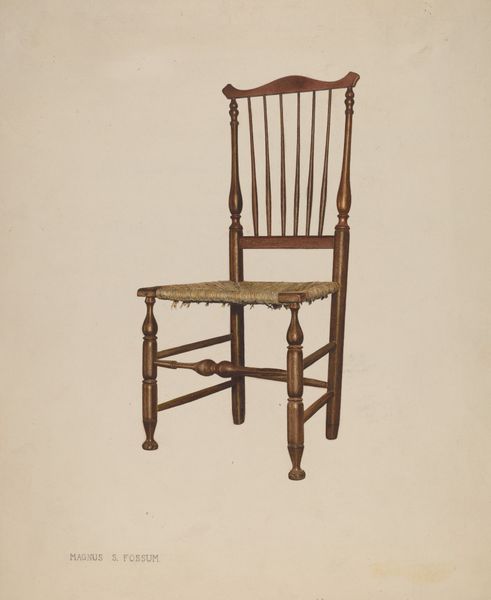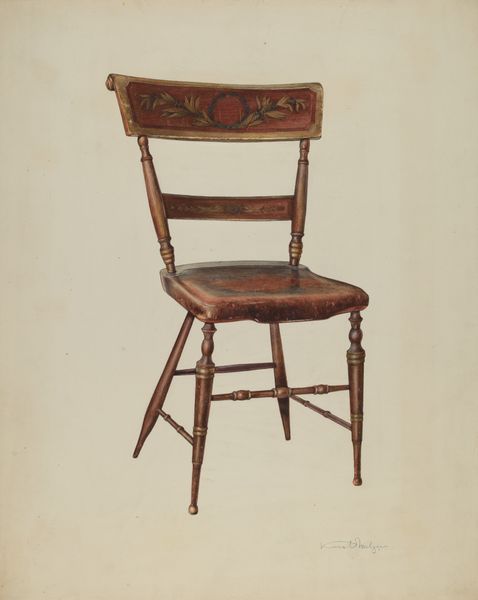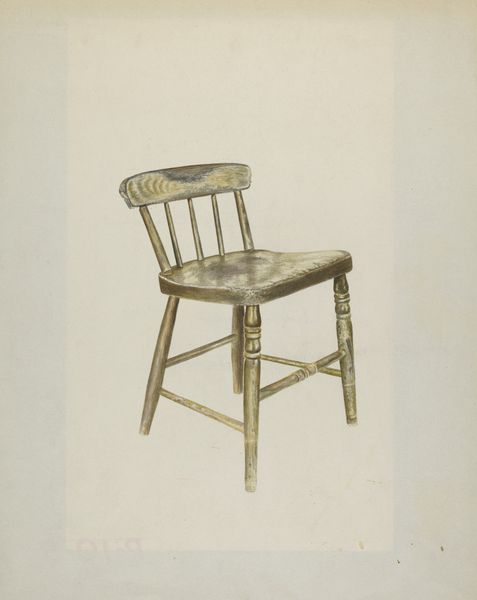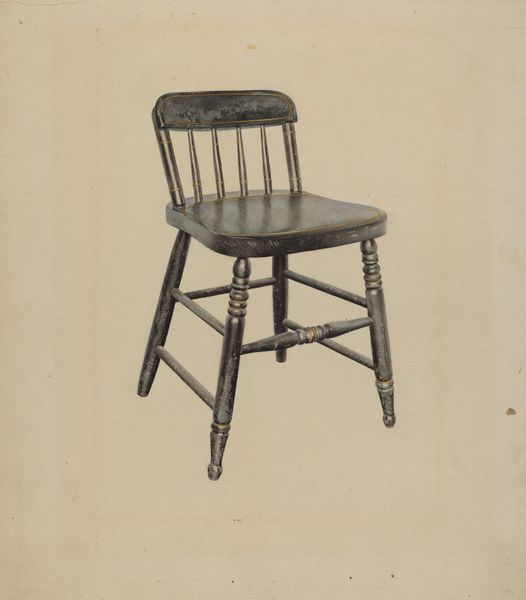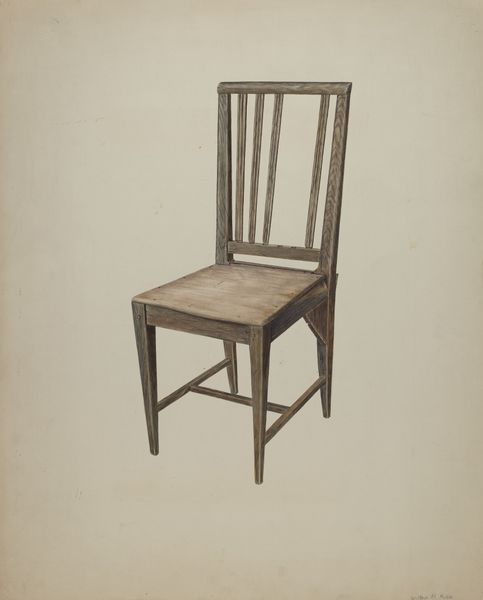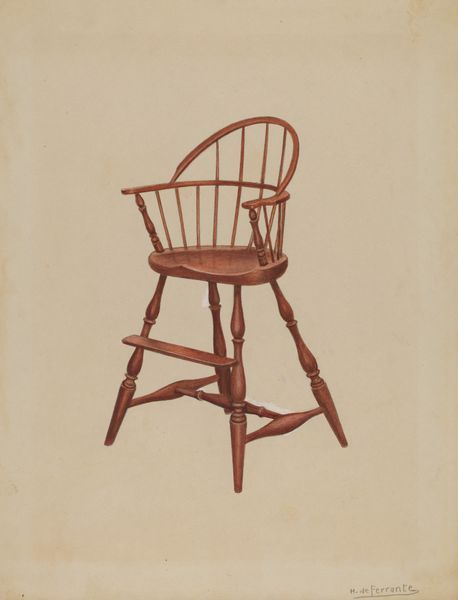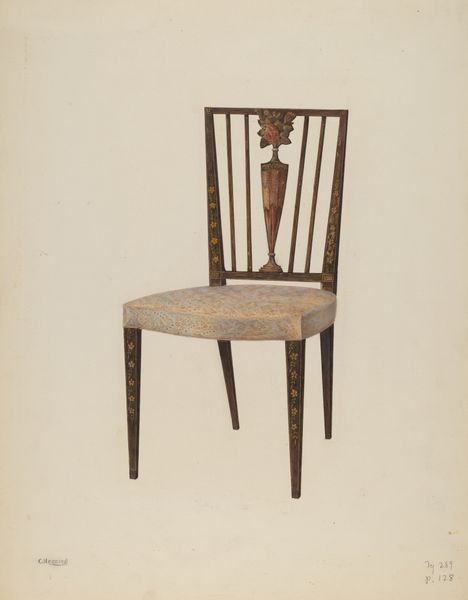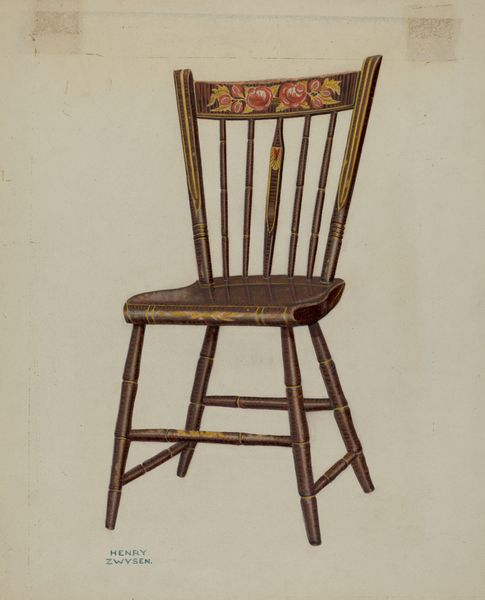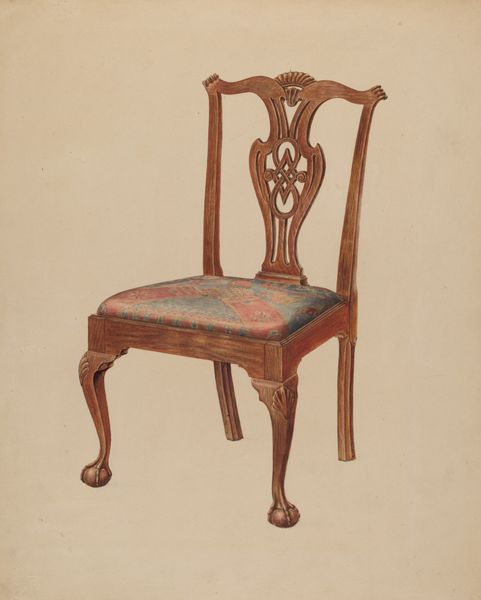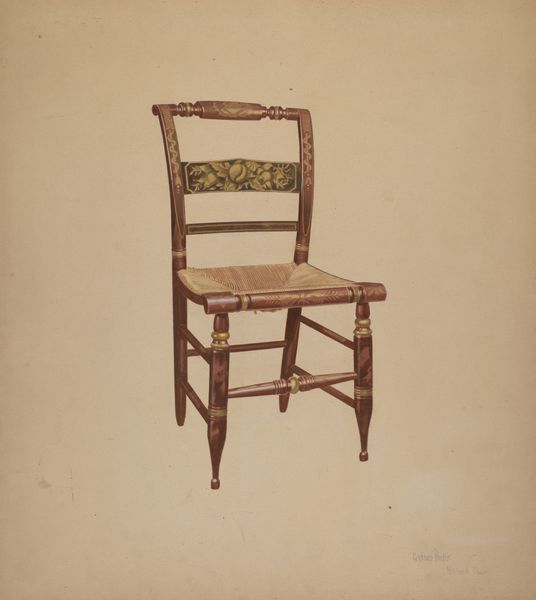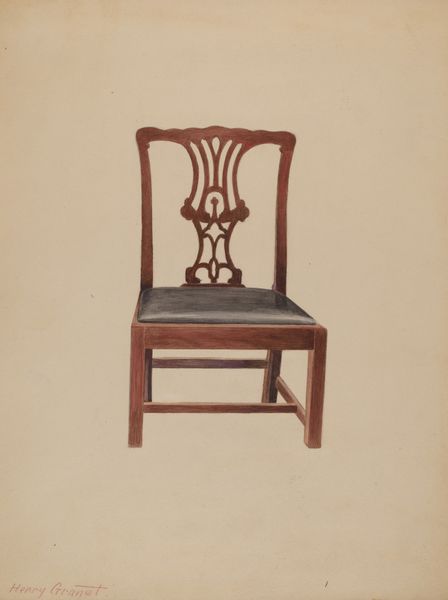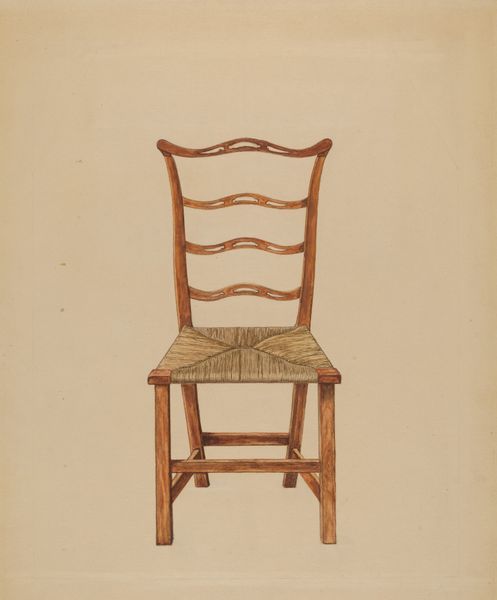
drawing, watercolor, wood
#
drawing
#
watercolor
#
pencil drawing
#
folk-art
#
wood
#
watercolour illustration
#
genre-painting
#
watercolor
Dimensions: overall: 45.7 x 35 cm (18 x 13 3/4 in.) Original IAD Object: 32 1/2" high; 19" wide
Copyright: National Gallery of Art: CC0 1.0
Editor: Here we have Charles Henning's "Pa. German Chair," created around 1939. It appears to be a watercolor drawing showcasing a wooden chair, likely intended to document or celebrate the craft. The level of detail in the painted decoration is intriguing. How do you approach this piece, considering its potential blend of art and craft? Curator: Well, first off, let's think about what it meant to document a Pa. German chair in 1939, particularly using the "high art" media of drawing and watercolor. Were such chairs valued? Who might have acquired them? Were these for use, or status? Because Henning has depicted this object, raising it from something that could simply be functional or decorative to something "worth" depiction. This elevates craft into something else. Editor: That’s a fascinating angle – the act of documentation conferring value. I hadn't thought about it that way. Curator: Think about the process here: The material used to construct the chair. Who labored to source it, form it? What cultural pressures, or constraints shaped them? The watercolorist must have a different economic status, but the artist saw value to copy it by drawing. How does that exchange occur, and what does that mean? Editor: So, you are less concerned about the chair itself and more interested in what this documentation says about art making? Curator: Exactly! By meticulously rendering the painted details, Henning transforms a vernacular object into a subject worthy of artistic attention. Are these high art or "craft" traditions? We need to unpack the implications of choosing this subject and these methods to understand its full meaning. This is about process, class, labor. It invites us to see craft as more than mere utility. Editor: I see that so clearly now! Focusing on the materials and the cultural context really shifts the focus away from just aesthetics. I appreciate how you frame this piece. Curator: Thinking about it from all sides gives the work renewed vibrancy and makes you consider the artist's social background.
Comments
No comments
Be the first to comment and join the conversation on the ultimate creative platform.

